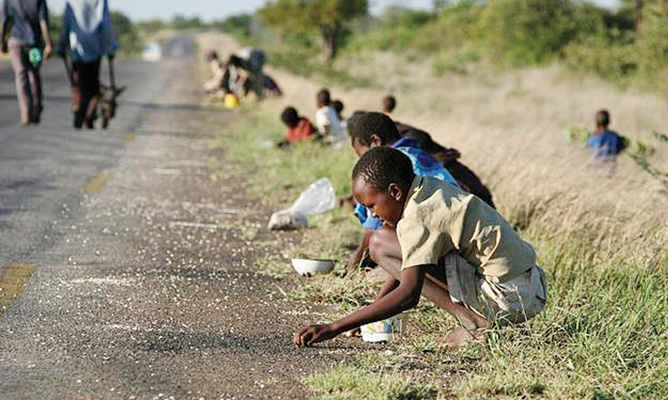By Lloyd Takawira
Despite authorities flaunting over an anticipated bumper harvest, Zimbabwe is still amongst counties in the continent that are food insecure, the United Nations Food and Agriculture Organization (FAO) and the World Food Programme (WFP) have said.
Budding from the good rains, the highly publicized Pfumvudza Communal farming scheme and the contentious command agriculture program, Zimbabwean authorities have been assuring the citizenry of food security forecasting a bumper harvest of nearly 2,8 million tones of maize up from 900 000 tones harvested in 2020.
However a report from the titled “FAO-WFP Hunger Hotpot report for March to July 2021” painted a glaring picture of the situation poring government projections saying Zimbabwe is still in the red-zone of hunger.
The FAO-WFP Hunger Hotspot report had this to say:
“Zimbabwe continues to suffer from a complex food security crisis, driven by weather shocks and persistent macroeconomic instability that is worsened by the effects of the COVID-19 pandemic. Rampant food inflation remains a key driver of acute food insecurity,”.
The FAO-WFP Hunger Hotspots report further said the hunger hotspots in Zimbabwe were identified through a consensus-based analysis of key drivers of food insecurity, as well as economic outlook.
“Despite a slowdown in monthly price increases since mid-2020, and the stabilization of the official exchange rate, food prices in February 2021 were still 35% higher than the year before. The high prices continue to erode households’ ability to afford food, while expectations point to persisting high levels of inflation.
“The arrival of newly-harvested food crops is expected to improve the food security situation after March, particularly among rural populations, but conditions are likely to remain precarious, as many households have already exhausted their food stocks from previous harvests after two consecutive years of well-below-average production.”
For Zimbabwe the multiple shocks exacerbated by the ravaging COVID-19 pandemic have worsened an already precarious situation that has been obtaining in the country ,hence these pre-existing socio-economic challenges compounding together could see an estimated 5.6 million people who are severely food insecure in failing to recouparate.
The political crisis that has been obtaining in Zimbabwe for the last decade or so could worsen the susceptible to hunger primarily due to conflict dynamics, economic shocks.
According to FAO , the country’s annual maize requirements are estimated at 1,8 million tones.
